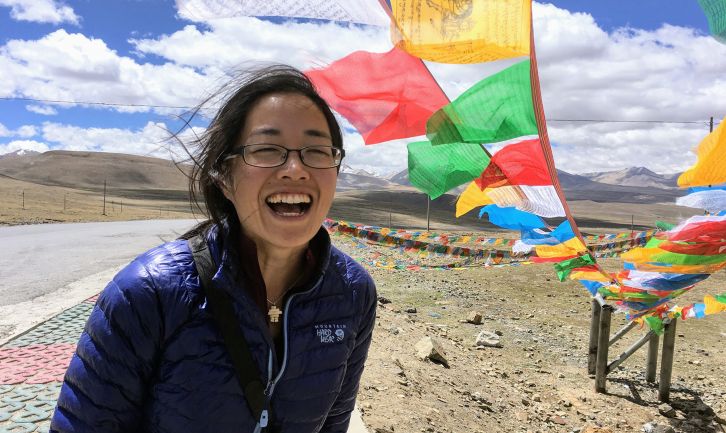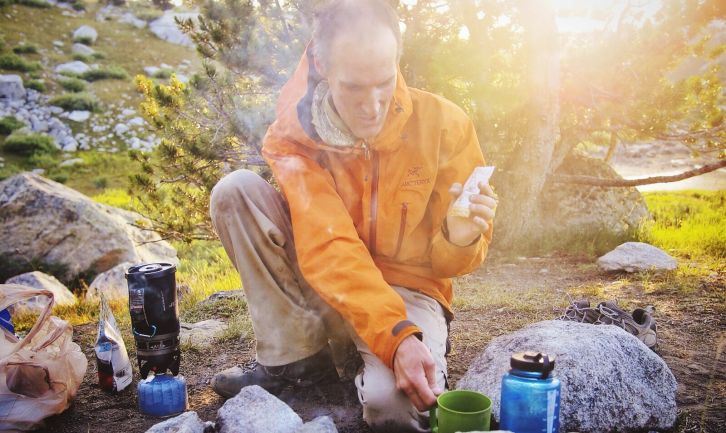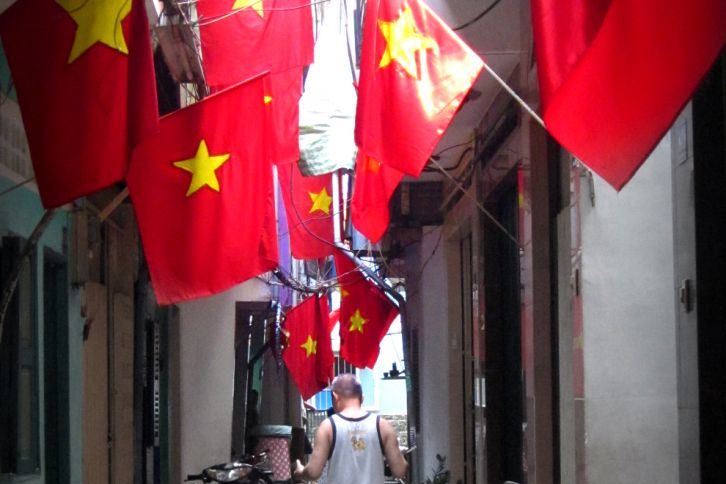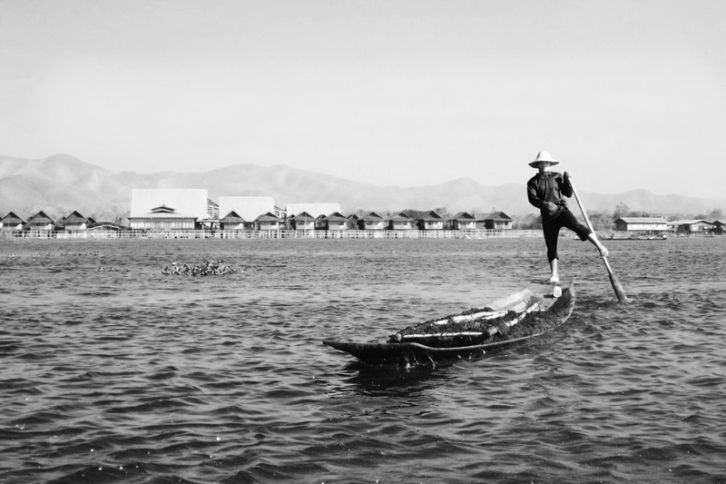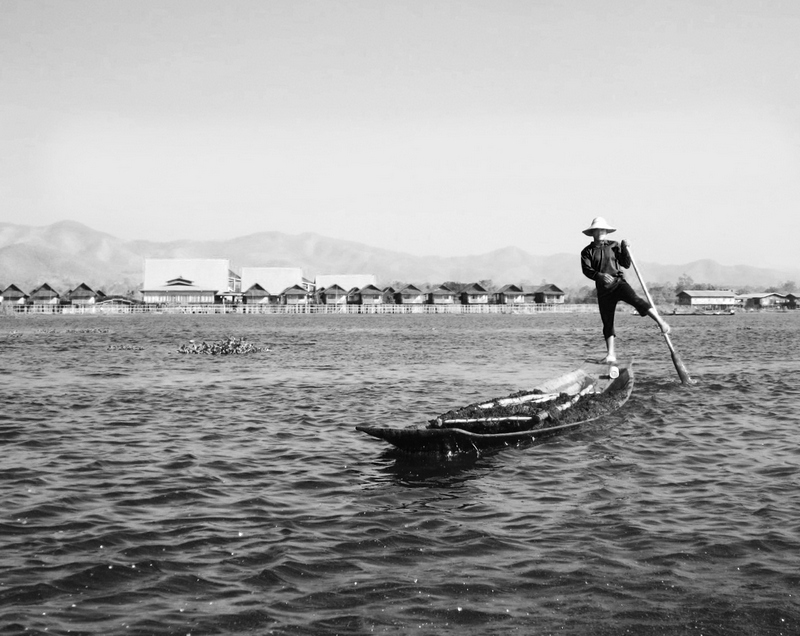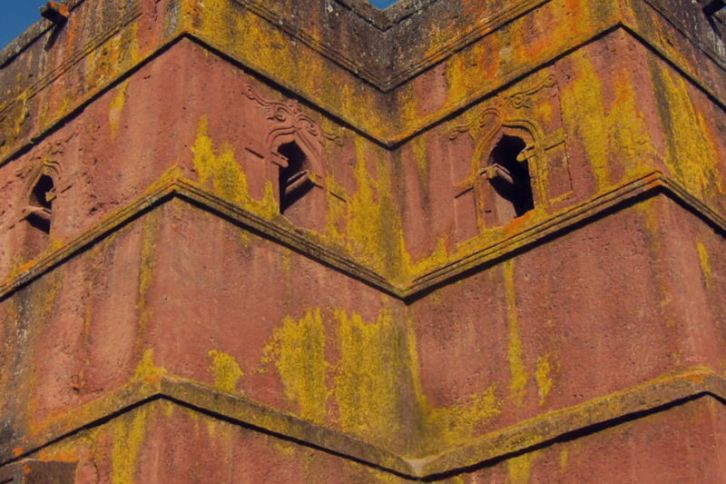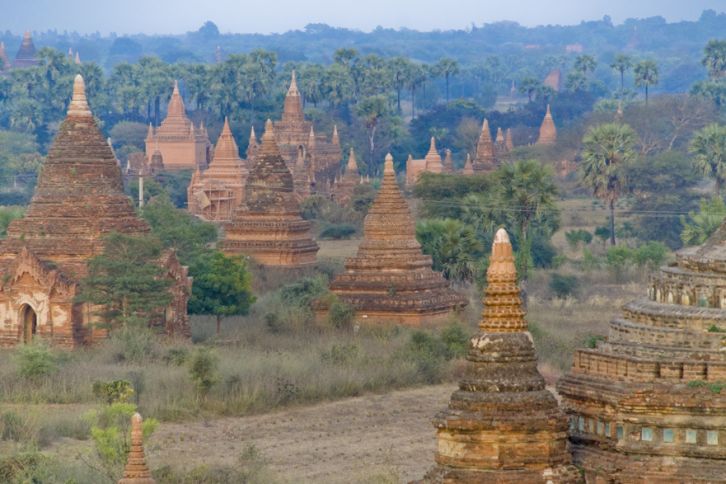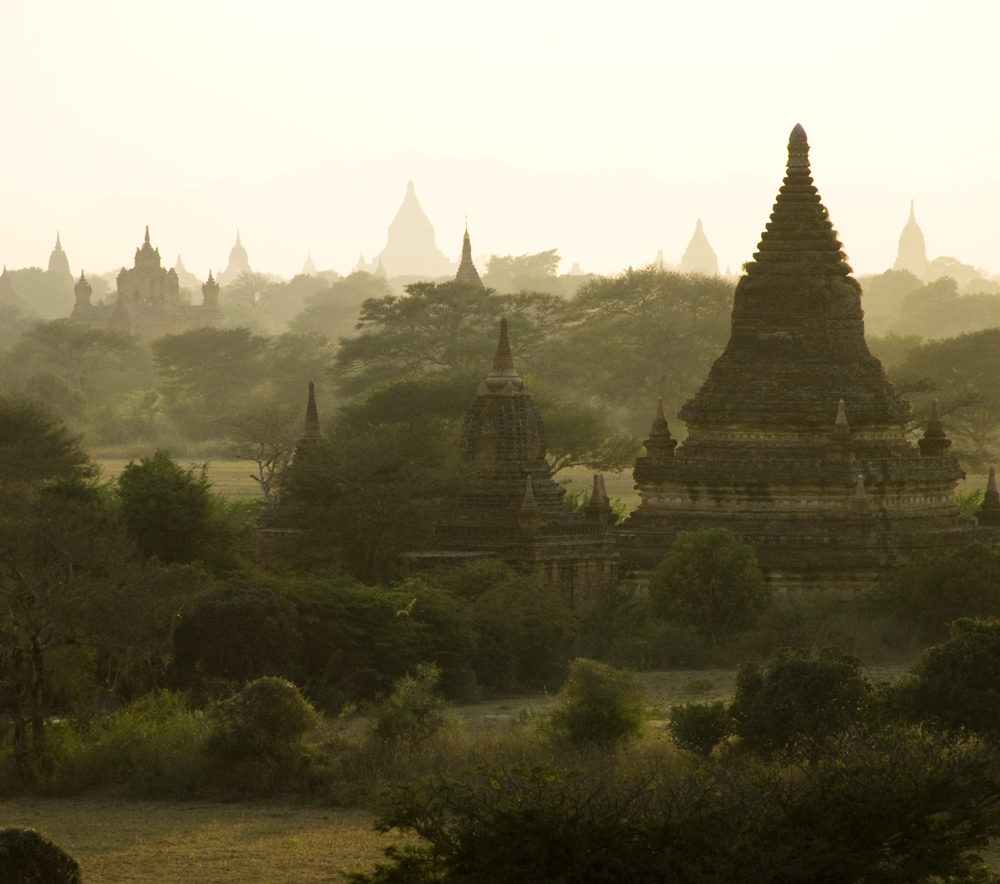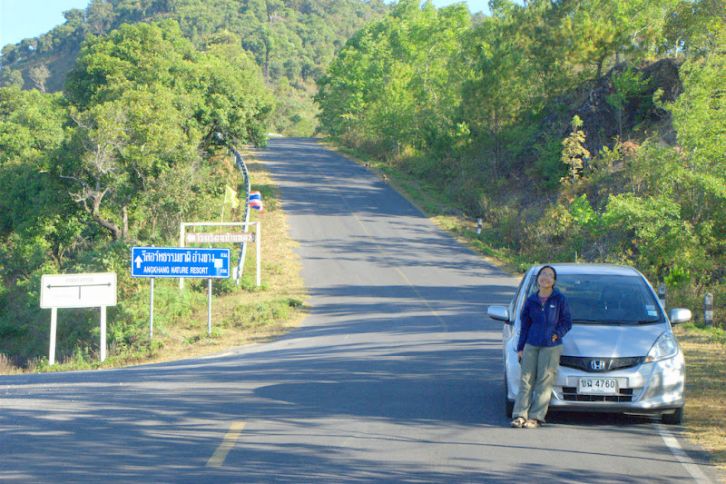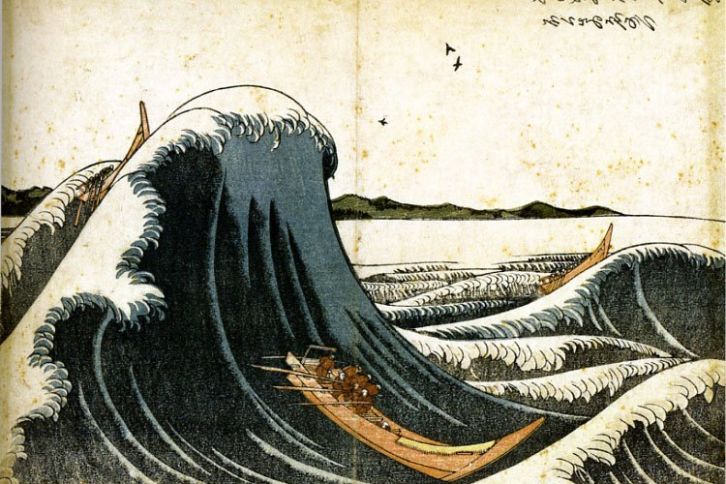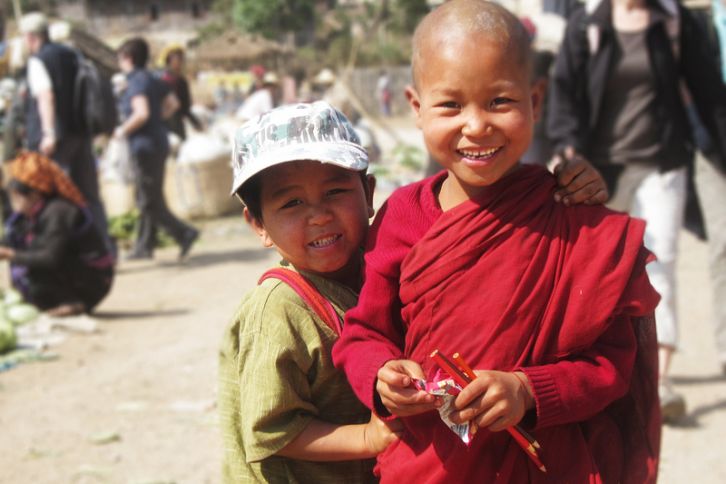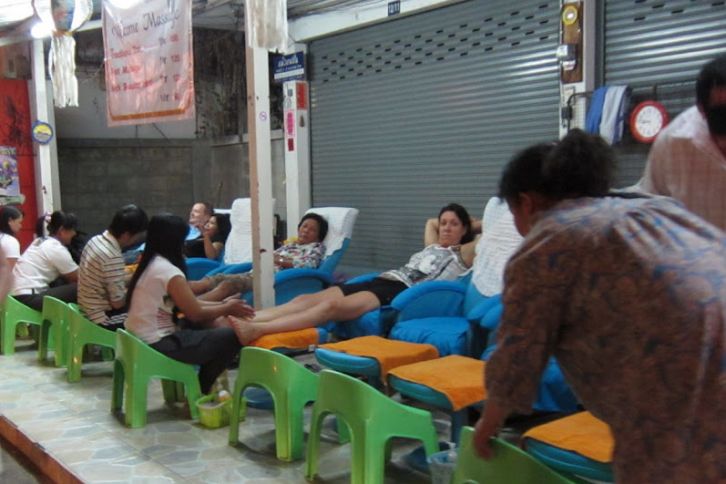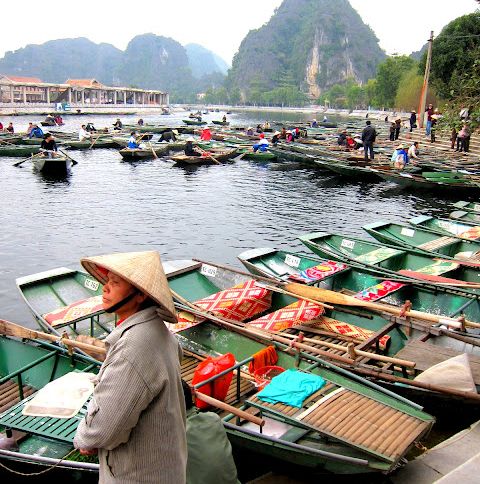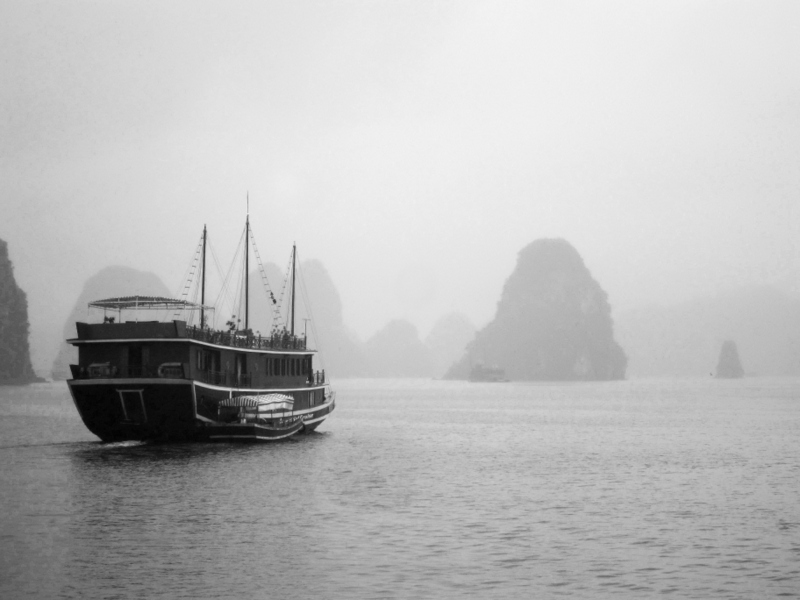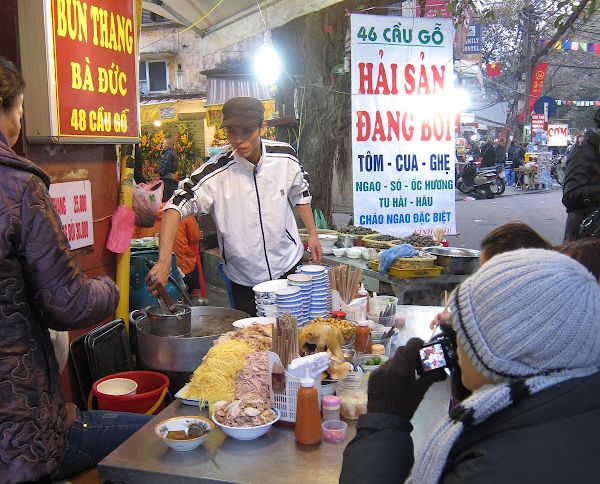But to me that pretty much sums up what Moroccos is all about. A country that evokes such a contrast in emotions. I went from loving it, to hating it almost on an hourly basis.
Eco-Friendly Gift Ideas For Adventurers and Travelers
TipsI promise you won’t find gag gifts, or single-use items, or “fad” items. Instead you’ll find products I truly love (and have bought with my own money), causes I support, and gifts that do good. Conspicuous waste should never be celebrated.
Under $25: Must Have Travel Accessories for No-Fuss Travelers (Updated 2024)
Travel TipsFrom camera protection, to portable door alarm, these are must-have travel items under $25 for practical, non-sense travelers.
What We've Been Up To
First thing I noticed about Thailand (besides the humidity) was how easy travel became.
Take note that I just arrived from Africa, and by comparison, Thailand (and to lesser degree, its neighbors) felt much more, oh, about a gazillion times much more accommodating to travelers.
Which is why whenever someone asks us, “Where should I go as a first time traveler?” I say – “Thailand” or “South East Asia” then gush about why I ended up falling in love with the region.
It’s Easy to Get Around in South East Asia
In the spirit of making broad generalization – I’d like to say that South East Asia is an easy place to get around. The roads are decent, the border crossings are well documented, and the public transportation options are relatively comfortable and clean.
Although to be honest, after my brother was stuck in a piss-smelling, cramped train compartment in Vietnam for 12 hours – it’s not perfect. But for the most part, they’re…endurable.
But the big reason why it’s easy to get around in SE Asia is because there’s an established infrastructure to ferry backpackers around (see below).
There’s an established backpacker’s trail in South East Asia
This was another thing that came as a pleasant surprise for me. Not the fact that it’s popular with backpackers (I knew that) – but how much I enjoyed what it actually means.

Traveling in a region popular with other backpackers mean everything things are as streamlined and as efficient as it can be. Because thousands of others have walked on the trodden path.
Trying to figure out how to get from Phnom Penh to Vietnam? You’re not the only one who want to do it.
The Thailand, Cambodia, Vietnam, Laos (and to a certain degree, Myanmar) circuit is a well trodden path with few variations. Wherever which way you’re planning to go, most likely others have done it in the past and many others are planning to do so at the same time as you are.
There are many companies who offer transports and there’s plenty of information about the best way to get there (land, river, ocean?), however you want to get there (In a bus, a minivan, a private taxi?), whenever you want to get there (now, next hour, in a few hours?).
Even better, guesthouses in South East Asia can provide you with this information. While in South America and Africa I had to rely more on guidebooks or online. Here, all I had to do was come down to the common area and look at the community board. Oh, the mind boggling options (land, river, ocean? In a bus, a minivan, a private taxi? – you get the gist). All easily arranged through the guesthouse.
South East Asia is cheap, traveling there feels like a vacation
Because your dollar stretches further, the little things that make traveling become so much more than sight seeing – like ducking in for a quick Thai massage, or renting a scooter to drive around an island, or renting a private beach cabin – is affordable.
I had never felt so… rich. I remember thinking to myself, “This is the kind of lifestyle I’ve always wanted to have – but can never afford back in the states.”
Having said that, SE Asia is not as cheap as a lot of people think. This was a sentiment I heard quite a bit from other travelers. I actually found that my daily cost there was about twice as much as South America.
South East Asia people are friendly
Yet another broad generalization. Which I usually hate to make (or hear). But in my limited personal experience, this is true. Especially in Thailand and Myanmar where the locals would get out of their way to help the lost and confused tourists.
Smiles, like humidity and strange looking fruit, was something that come in abundance in South East Asia. Even those who want to rip you off do so with a smile.
Delicious Food
If you like Asian food (or good food, in general), you’ll find that South East Asia is the place to be.
I can go on and on about the variety of food and how easy it is to find food. For me, like many others, having not only good food, but easily accessible good food regardless of what time it is, is almost important as having good wifi. Almost.
When we were traveling South America, food was aplenty, but most of the times it was just ok. It wasn’t bad – but it wasn’t like, “Omg, that trucha frita was to die for!” because fried trout is just… fried trout (in Peru, the food did get better).
In Morocco, I knew there’s more than just tajine, but how come all restaurants only serve tajine? I don’t get it.
Meanwhile, I’d go back to Thailand in a heartbeat just for the food and I know my brother would love to go back to Vietnam for some awesome pho.
(Here Jack would like to add that Tokyo is still his favorite foodie place – and I’d like to add, “Japan doesn’t count. It’s not even in South East Asia.)
Cheap, cheap, cold beer
Yes Asia can be hot and humid. But Asia is also the land of 50 cent draught beer. Brilliant!! Yes, some of them taste like water buffalo’s piss – but here’s my beer recommendation (not all available as draught): Beer Lao (Laos and Thailand), Angkor (Cambodia), Larue (Vietnam), Batavia Lager or Anker (Indonesia).
Wifi Is Everywhere
You won’t have an internet withdrawal syndrome. I think it’s partly because it’s so popular with the younger crowd, the South East Asia gringo trail is well served with wifi. It’s widely available in coffeeshops and honestly, finding a guesthouse that does not have wifi might as well be the more challenging task.
For first time backpackers, this will definitely ease the anxiety of being away in a foreign land. Plus, how else can you brag about your travels other than uploading all of your pictures on Facebook?
English is Widely Spoken in South East Asia
With the exception of Vietnam, we found that we could get by with only knowing English. Which is great, because even though I always strive to learn the basic words in local language, the tonal language and the crazy characters are daunting.
South East Asia is Safe (with regular precautions)
Because South East Asia is so popular with backpackers, and because there’s a big disparity between our purchasing power and that of the locals – the region is also rife with scams. Some of them are pretty creative ones, like the fake embassy on Thailand – Cambodia border, to the “the temple is closed, come with me on a shopping spree” in Bangkok.
Fortunately, most scams are harmless. And regardless of how you feel about bribes, know that in most situations, a little bribe can go a long way in smoothing them out.
There will be some unexpected things that don’t go as planned.
But in a way, that story would be much more interesting than “We went to see this tourist site and everything went very well according to plan.” If you and I ever meet in person, ask me about Ethiopia. Or Vietnam. Boy, do I have stories to tell you.
—
I never planned to go traveling in South East Asia. The opportunity just presented itself and I took it with the, “Well, might as well” attitude. But I surprised myself by how much I enjoyed my time there and I think it was mostly because how accommodating everything was.
So yes, I have no reservation in recommending first time travelers to go backpacking South East Asia. Or even seasoned travelers. It’s easy enough, but with a dash of challenges thrown in to make it exciting. I personally can’t wait to take Jack to Thailand. I know he’d love it there.
Do you agree? Where do you think first time backpackers should go?
Inle Lake, Myanmar
The most iconic image of Inle Lake, a large freshwater lake in the middle of Myanmar, is of its fishermen.
They are known for their conical fish trapping device and their unique way of rowing – one hand on the top of the oar and one leg wrapped around the bottom. Then, with a swivel of the hip, the boat magically moves forward.
You have to be see for yourself to appreciate it 🙂
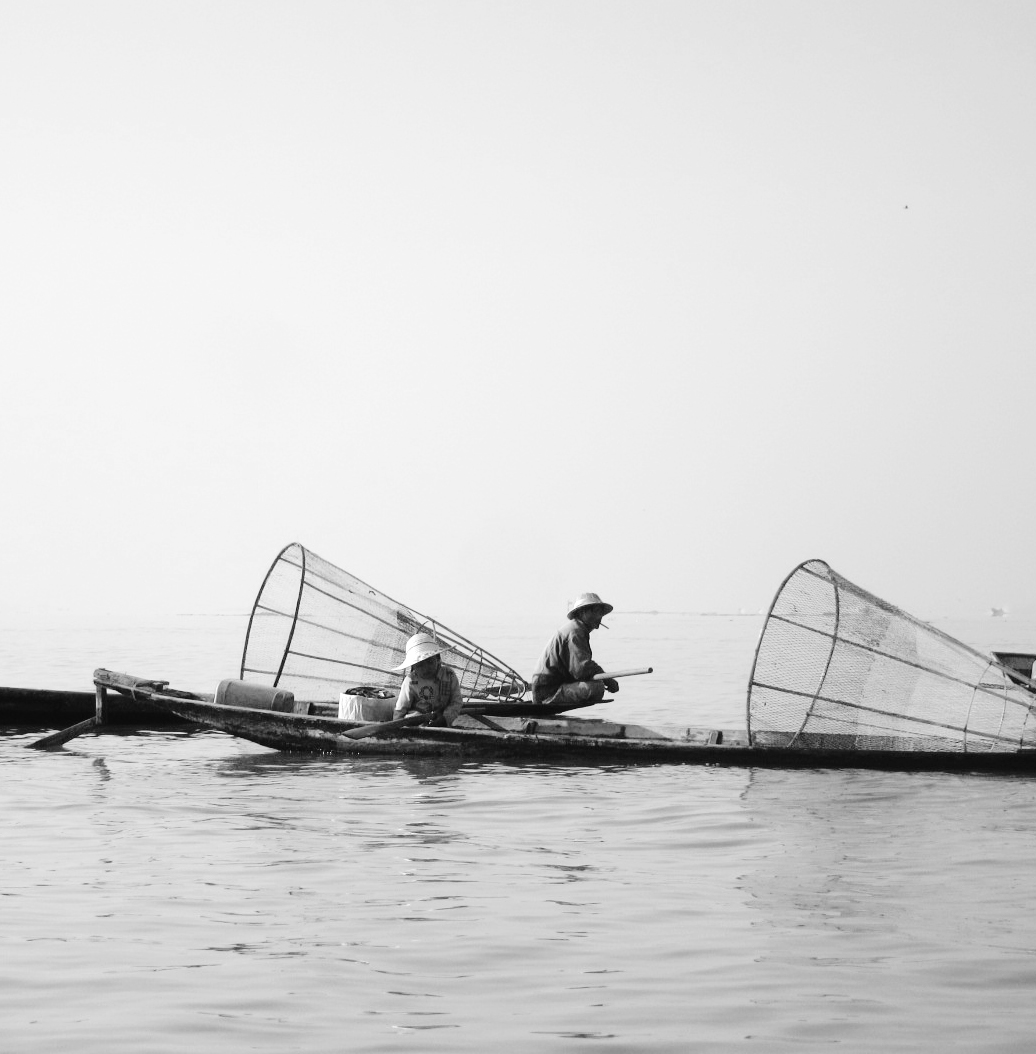
The fishermen of Inle have developed this unique way of rowing standing up so they could see over the tall reeds growing in proliferation around the lake.
The best way to see the lake is by renting one of the many motor-powered long boats. Along with visits to handicraft workshops, most of them were just kind of ‘meh’, we also visited the village where the market happened to be that day.
The traditional market around Inle is run on a 5-day rotation basis as it visits a different village around the lake each day. Even though it’s getting more popular with tourists, it was still largely traditional.
I always love going to the local markets. It’s a good place to see the local produce (lots of fish), try the local food (mushy tofu, anyone?), the local snack (delicious sambusas), and observe people of different tribes coming in to do their weekly shopping.
Around Inle, the most distintive looking of these tribes is the Pa-O, with its women wearing orange towels wrapped around their heads.
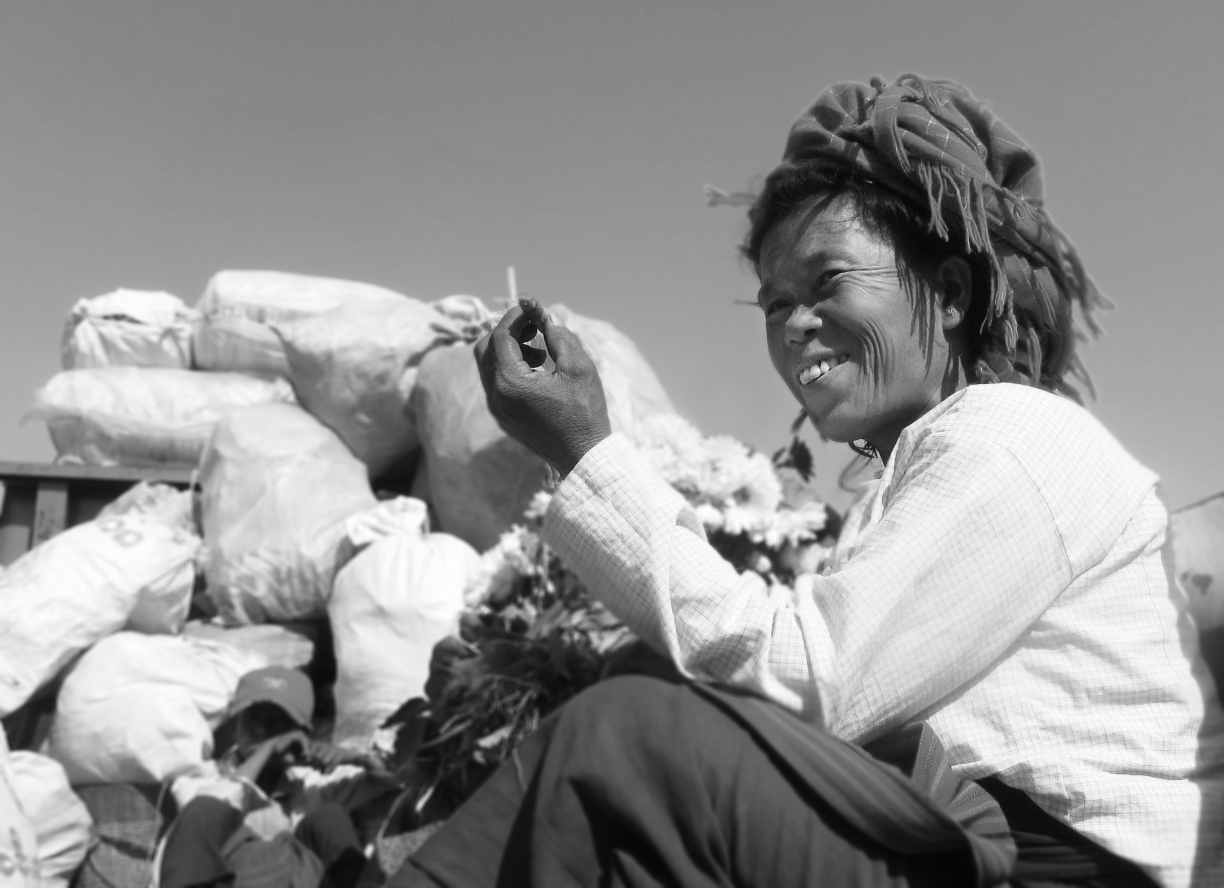
Incidentally, the market also provided a good opportunity to see what Burmese kids were allowed to play with.
These 3 kids were playing nearby the market with leftover veggies. “How cute,” I thought, “They’re pretend cooking.” Until I realised they using naked razors as their “toy” knives.
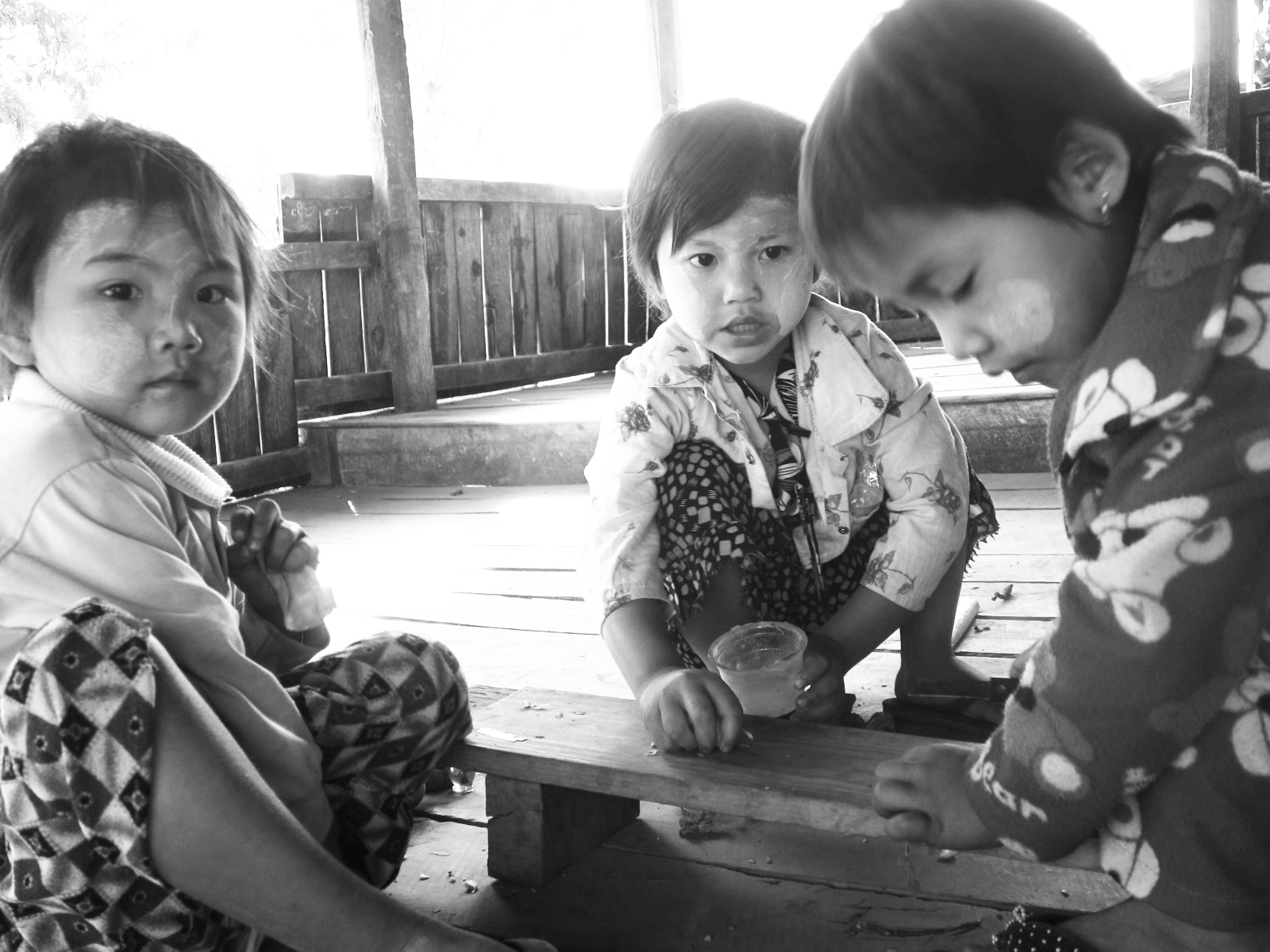
What was most interesting was seeing these villages that exist inbetween the two worlds: land and water. Inle Lake is a marshy lake with no definite “this is where the lake starts”. The land just slowly gets soggier and soggier as you try to get closer to it.
These villages are built on the parts of solid land that jut out into the lake and are interconnected by bridges and waterways. Visiting these villages, I realised how rowing standing up would be an advantage. You can easily get lost in this watery world.
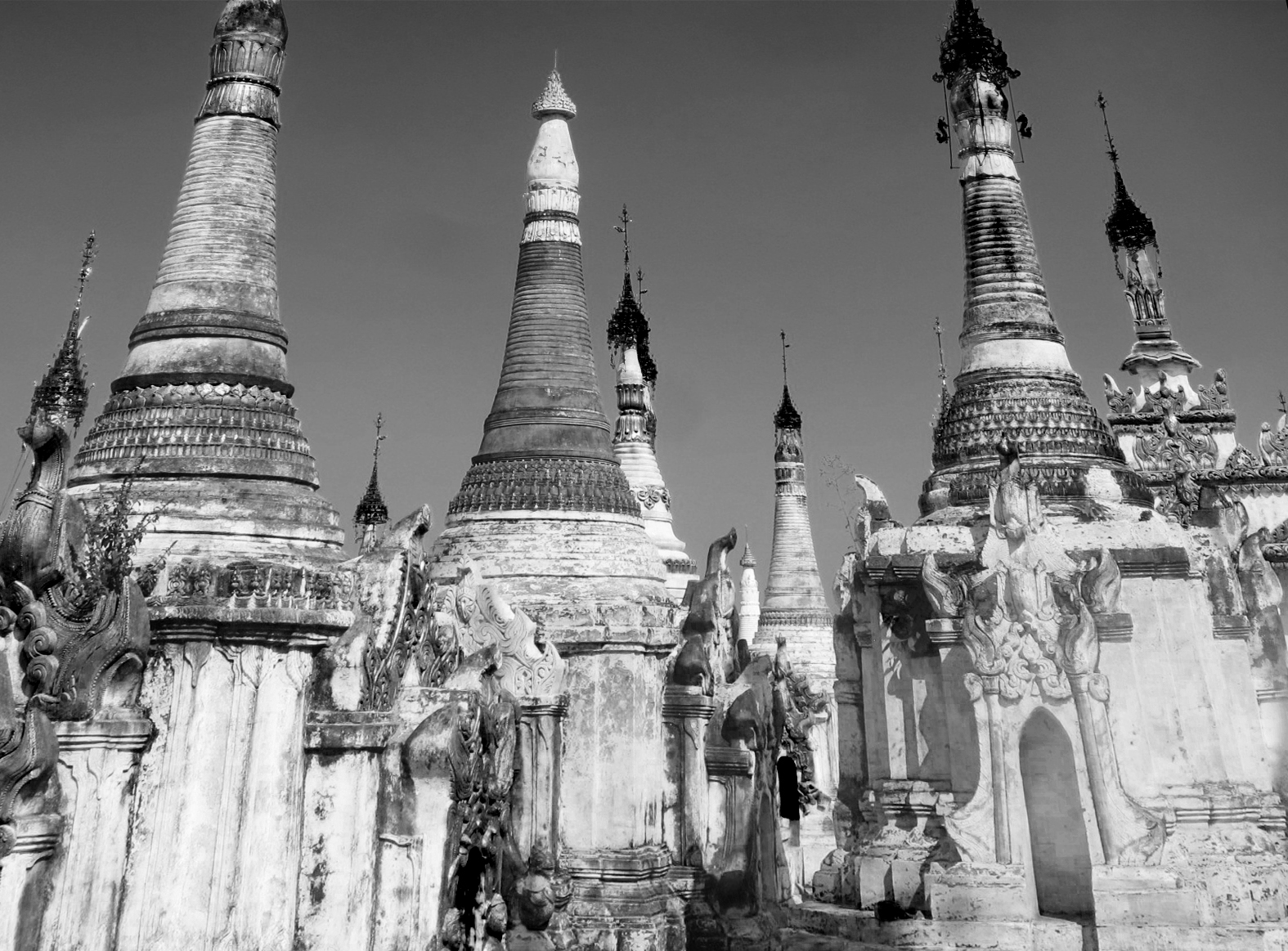
Riding on our boats through one narrow channel after another we passed beautiful traditional wooden houses on stilts, vegetable gardens magically floating over water tended lovingly by their owners perched over their boats, numerous temples and monasteries. I couldn’t help but be fascinated.

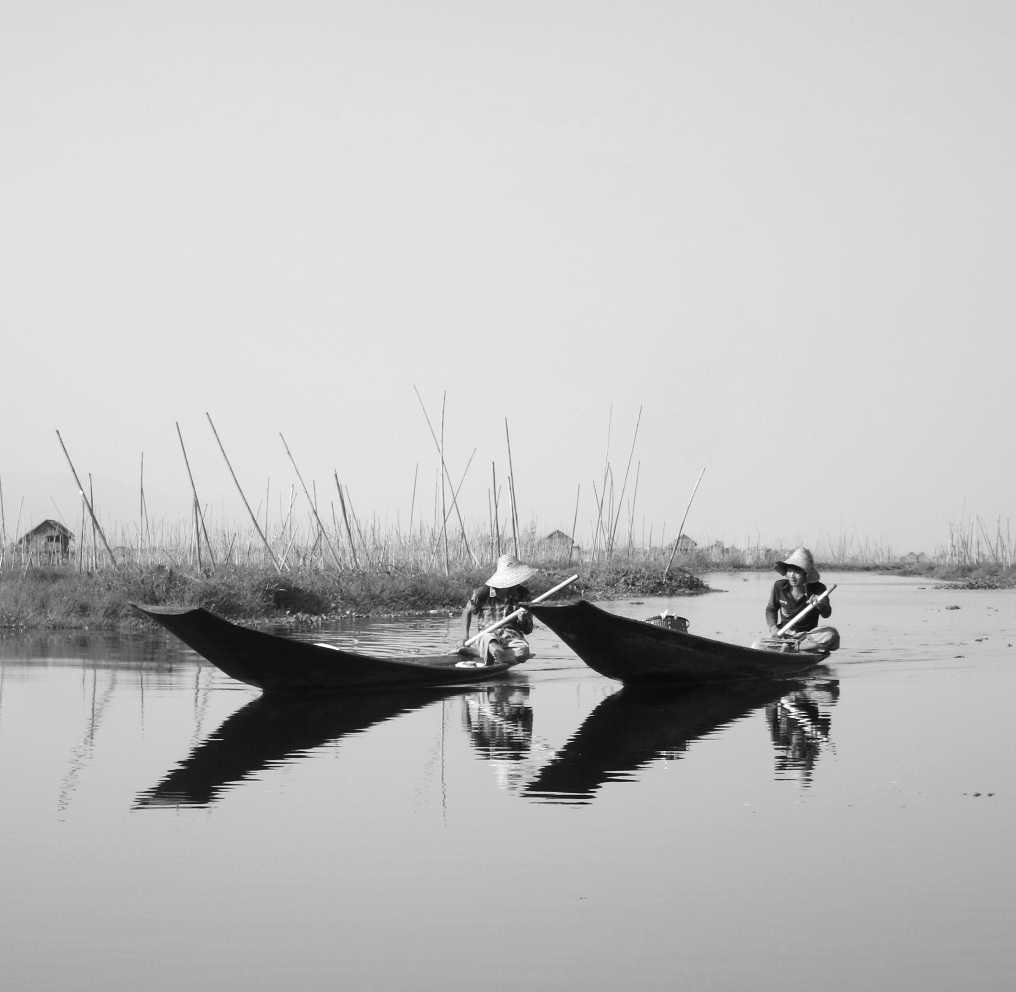
Alternatively, you can also explore Check out Inle Lake by bike.
Inle Lake was truly a different world.
—
A boat tour should cost around 25000 Kyats per boat.
Where to eat in Nyaungshwe: the market in the center of town for traditional food, Mimi’s Cafe for strawberry lassie (they also have good bikes to rent).
Traveling to Ethiopia? I got some tips for you. I left Ethiopia with plenty of stories to tell; stories about bag slashers and pickpockets, about rabid dogs, and about life in Ethiopia in general. There are also stories about crazy landscapes and unbelievable marvels.
Bagan, Myanmar
There’s a photo on the inside cover of our Myanmar guidebook. It shows a landscape dotted with temples as far as the eyes could see. Ever since I saw that, I’d wanted to come to Bagan and see it for myself.
Fast forward to short while after, we arrived in Bagan.
We arrived at 3 in the morning in the dark and deserted bus station. All the locals immediately got off and disappeared into the darkness, leaving behind a handful of sleepy, confused tourists still on the bus. We weren’t scheduled to arrive until 5 am.
“This can’t be it. We have 2 more hours to go,” we said to each other. I even turned around and got ready to go back to sleep.
But the bus driver came back up, “This is Bagan. The bus goes no more.”
And that was how we arrived in Bagan. As soon as got off the bus, the horse cart drivers descended upon us. Stumbling in darkness with our stuff, rubbing sleep off our eyes, and being pursued by horse cart drivers wasn’t a welcome we had in mind.
(Btw, Bagan is so small we got together with other tourists and ended up walking to where all the guesthouses were.)
But in the end, it was all so worth it.
The Temples of Bagan
Later on that day, we rented a horse cart to take us to see the famous temples of Bagan. Individually, they are not as intricate as Angkor temples but I like these temples in Bagan so much better.

For one, they’re almost completely deserted. Almost eerily so. We didn’t have to compete with busloads of sweaty tourists, jostling elbows to get inside.
As a matter of fact, some of the people we jostled elbows with were the locals. Some of these Bagan temples are being used daily as a place of worship so we got to see how much religion played in the daily life of the Burmese people.

And lastly, they are just so many of them. So, so, so many.
Seeing the sun setting over dozens, no hundreds, of temples dotting the grassy landscape of Bagan was probably one of the most amazing sights I’d seen. My brother and I climbed up one of the temples and simply enjoyed the view. It was one of truly unique landscapes I’d ever seen. How did I get so lucky?
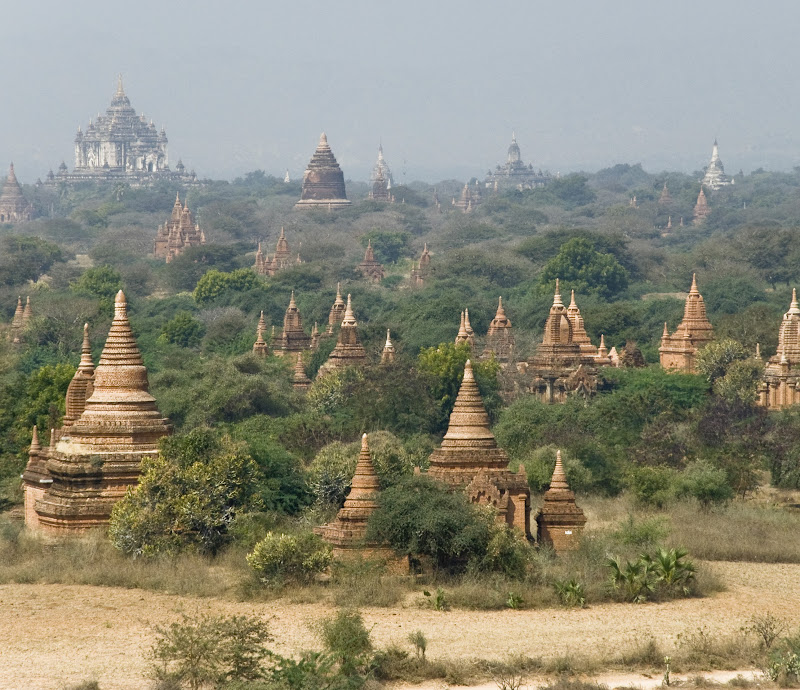
I was utterly enchanted.
I was afraid I’d be disappointed in the real thing after seeing the postcard perfect version. But in Bagan, the real thing was so much better.
See more pictures from this amazing place.
Bagan, Myanmar
How to get to Bagan from Yangon: Bagan is about 10 hour ride from Yangon (15000 Kyats). Buses leave from a bus station 45 minutes away from center of Yangon. Far from ‘bus from hell’ experience, it was a decent, air-con bus and the road was paved all the way.
Where to stay in Bagan: Just like everywhere in Myanmar, there’s a shortage of guesthouses at that time. Booking ahead is recommended. We stayed in May Kha Lar guesthouse. It was decent.
When my 18 year old brother with his freshly minted driver license suggested that we rented a car to visit the golden triangle region in northern Thailand AND offered to do the whole drive himself – it took me a split second to decide that it was the most brilliant idea, ever!
My mom was throwing up on the side of the boat, our guide standing by her side holding on to her just in case she got thrown off the boat. All around us the water of Sunda Strait, the stretch of water separating Java and Sumatra, was bucking in giant swells.
I took more pictures of people in Burma (Myanmar) more than anywhere else during our trip around the world. This is due to the following reasons:
I’ve learned that looking back at my pictures, those with people on it tend to be some of my favorites. I have horrible memories and sometimes looking at a picture, taken less than 1 year ago, I’d be drawing a blank, “Where was this?” – but I remember more about a place and its people when the act of taking a picture involves an interaction with a person. Somebody. Anybody. Even if the interaction is as simple as asking them for permission to take their picture.
Bangkok, Thailand
We really didn’t know what to expect when we decided to come to Thailand, that was why a lot of the things about Thailand came as such a nice surprise.
One of these nice surprises was discovering traditional Thai massage. We got addicted to this (and for $7/hr, it’s hard not to) and got one at least every other day (what a tough life traveling can be).
Places offering Thai massage are everywhere, and some sidewalks have been converted into an impromptu spa simply by placing some reclining chairs.
Sidewalk Thai foot massage in Chiang Mai
I have always found that even the deep tissue massage one gets here in the States is never – and not trying to sound too masochistic here – painful enough. Some of you will know what I mean, no?
Thankfully, I never had that problem with traditional Thai massages. This is the massage for those who crave that invigorating feeling, that ‘Oh, it hurts so good’ sensation.
My first time getting a Thai massage came as a mild shock. It was a lot different than what I was used to.
First, they ask you to change into a pajama/robe thingy and proceed to wash your feet.
Second, the masseuse use not only her hands, but her arms, elbows, knees and feet – that’s right, feet – to apply the pressures.
Third, some of the areas they work on are just simply more intimate than your regular Western massage. Your butt, inner thighs, outer thighs, and your groin area are all fair game. And not only that, they get pretty close to you – physically. As in, they get all over your body while pulling, stretching, and bending limbs.
And fourth – I had the skinniest Thai women with an amazing vice-like grip that made me go ‘Oh my holy mother gaaawd’. I mean, the one masseuse I liked to go to in the states was this burly Mexican guy (who has sadly moved to Texas) and whom compared to these Thai ladies, had a grip as soft and gentle as a fluffy kitten. How did they get so strong?
And if the vice like grip is not enough, they stand on you. I found out about this as I was laying face down and noticed an out-of-this-world strong pressure on my pelvis. I was like, “What the heck?” – craning my neck I noticed the shadow cast on the wall.
“Eeeek, she’s standing on my back!!”
Which, was awesome. If you like hard massages.
Thai massage is for you if you:
– find regular deep tissue massage is not deep enough
– are looking for an invigorating more than a relaxing massage
– are not particularly ticklish or shy
Thai massage? One more reason why we love traveling in Thailand so much.
Where to find a good Thai massage place in Bangkok and Chiang Mai
Unfortunately, not all Thai massage places are created equal. If you ever had to endure a bad massage (where 1 hour feels like an eternity), you know it’s important to find a place that works for you.
For a Thai massage place in Bangkok, we love Boonsita in Soi 1, Sukhumvit (the best Thai massage yet!), and in Chiang Mai, we like Lila Thai Massage (3 locations in Chiang Mai) that employs rehabilitated women prisoners. Some hotels in Bangkok and Chiang Mai also offer good Thai massage but these will be more expensive.
Would you consider getting a Thai massage?
The limestone karsts that line the river in Tam Coc is often compared to that of Halong Bay. As a matter of fact, the Tam Coc riverway is often referred to as Halong Bay on Land (or Halong Bay on River).
Since we had such a crappy weather in Halong Bay the previous day, I thought it would make a good opportunity for us to see what we missed out on there.
Hanoi, Vietnam
It was unfortunate that the weather in Halong Bay when we were there plainly sucked. The fog was so thick we could barely see the limestone karsts that make Halong Bay so famous.
I mean, if we squinted really hard… we could sorta, almost, see them.
Many times I felt like reaching up and draw the low-hanging curtain of milky whiteness away.
Thankfully, my brother was just excited to be going on a cruise (it was his first time), and I was in one of those moods that allowed me to shrug the whole unfortunate weather situation off.
Our fellow passengers consisted of a Vietnamese couple who didn’t talk to anybody, a nice German couple, two Chinese friends who got into a fight and ended up not talking to each other before the 2 day trip was over, and a mom and son team from Malaysia.
Because of the shitty weather, we were all forced to stay inside the boat all the time. We got to know each other pretty well because of that.
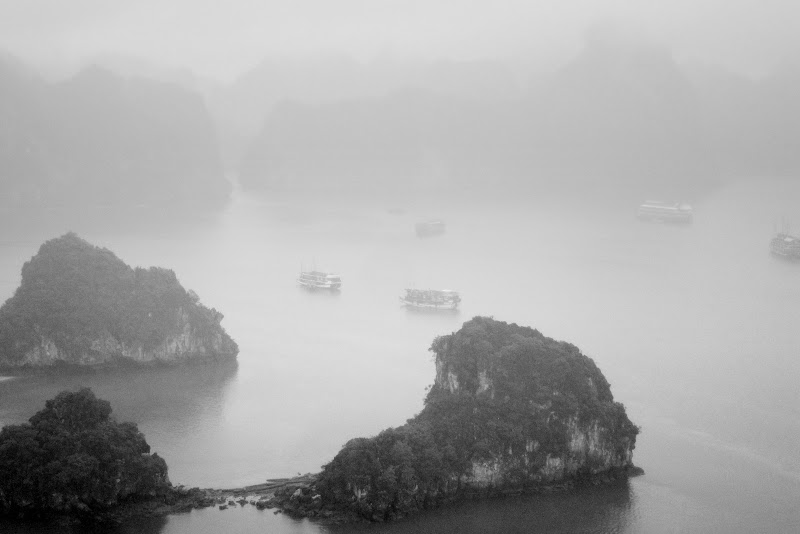
Not a long time ago, I’d have beaten myself up over the fact that we just spent $90 on an overnight stay on a junk boat in Halong Bay sans the Halong Bay. But if there’s one thing I had learned on our trip, it’s that things like weather don’t give a s**t about my carefully laid out plans and there’s not much I can do about it – so I could either whine about it, or I could whine about it for just a little bit then make the best of it.
And that’s what I did.
Besides, even with the less than perfect weather, I still got a glimpse of why, for many, Halong Bay is the highlight of their trip in Vietnam.
Is weather your best laid plan’s worst enemy?
Our Halong Bay “junk” was Alova Gold ($89) – it was a good boat with good food (always more than we can eat) and service. Can’t complaint.
Vietnam
Vietnamese food ranks pretty up there among my favorite ethnic food. But eating out in Vietnam, and just pretty much like a lot of things in Vietnam for us, turned out to be an adventurous affair. Especially if you’re a picky eater like me.
With the combination of Vietnamese tonal language (which makes it bloody hard to learn even the simplest phrase) and lack of English among Vietnamese, it’s wise to hone up your miming (and drawing) skills before hitting the sidewalk for food.
Food was everywhere on the streets of Vietnam. Everywhere in the morning you see people sitting on little stools slurping on a bowl of noodle to the point that you couldn’t tell whether it was a small street eatery, or just a family enjoying a bowl of noodle together for breakfast on their doorstep.
So you go there and you’ve made sure you learned the word for a bowl of chicken noodle soup which was ‘pho ga’ – and what you want to ask was of course ‘Can I get a bowl of soup, please?’ But the way they look at you afterwards sometimes makes you wander if you’ve just asked to borrow the underwear they’re wearing.
(Although that’s probably what you’d look like if you’re having breakfast in front of your house and someone starts muttering intelligible things while pointing at your breakfast)
And of course it’s a lot trickier if what you’re actually trying to say was ‘Does it have chicken in it? I’m a vegetarian. Maybe you can make it without meat?’
(Yeah, good luck with that.)
Regardless, even though street food proved to be a challenge for me, we still managed to eat our way up the coast of Vietnam – from Saigon in the South to Hanoi in the North.
Which goes to show how finding good food in Vietnam, is really not that big of a problem after all.
What to eat in Vietnam – Here are some of our favorite Vietnamese food
Pho – the national food of Vietnam. A brothy bowl of rice noodle served with bean sprouts, basil and lime. Add a dash of plum sauce and spicy Sriracha sauce for full effect. Chicken and beef are the most common. The vegetarian version can be found in bigger chains such as Pho 24 and FYI, Pho 2000 in Saigon that serves the best vegetarian pho I’ve ever had.
Bánh mì – if Pho is the national food, Banh Mi should be the national snack. Stands selling these Vietnamese sandwiches can be found on a lot of street corners. The meat version can be filled with liver pate, meat, canned sardines, stringy pork floss, etc. The vegetarian version comes with fried egg and cheese – eaten with a dash of homemade mayo, pickled carrot, and cilantro – all wrapped in crunchy and airy French baguette. SO GOOD! And for less than $1, it’s definitely our snack of choice.
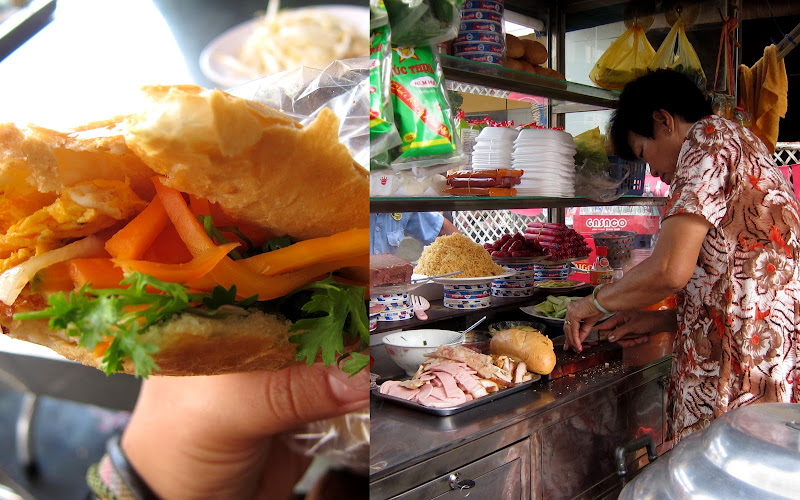
Banh Mi and the mean Banh Mi cart lady - Saigon
Mi Quang – this Da Nang region specialty consists of flat rice noodle served with boiled eggs, meat, shrimp, and basil leaves with just enough broth to keep the noodle wet. The addition of peanut and crackers distinguish this dish from other Vietnamese noodle dishes.
Mi Quang
Banh Bao Vac, or White Rose – a type of shrimp dumpling wrapped in a translucent skin, also a Hoi An region specialty. Qualities vary so much, but we found that we like those with flavorful broth, extra crunchy fried onions, and thinner, less doughy skin.
White Rose from Cafe Bobo, Hoi An
Cao Lao – Apparently real Cao Lao can only be found in Hoi An because real Cao Lao noodle can only be made from the water from a well in Hoi An. Well, I’m not sure if any of the Cao Lao we ate in Hoi An was the real Cao Lao, but they were all good (at least that’s what my brother said): thick chewy noodle, pork slices, crunchies, in a light pork-based broth. Simplicity at its best.
Cao Lao in Hoi An, Vietnam
Bia Hoi – places selling Bia Hoi, or locally made draught beer, are abound in Hanoi. Sipping on these 50 cent beer while munching on pumpkin seeds, and sitting shoulder to shoulder with the locals are a fun way to spend an evening. Don’t expect too much of the beer – Biere Larue is the less watery of the bunch, we think.
Bia Hoi fueled street corner cafe
Some useful Vietnamese food-related keywords to learn:
Cơm: rice
Mì, Bún, and Phở: different types of noodles
Bò: beef
Gà: chicken
Cá: fish
Many a night we’d stroll through the old town of Saigon or Hanoi among hundreds of diners taking their place on the sidewalk, taking a peek at what everyone is eating and it made us realise that Vietnam is truly a paradise for those who are gastronomically adventurous (snake wine, anyone?).
My brother was delighted. But as for the vegetarian in me, I was secretly glad we were heading back to Thailand afterwards.

